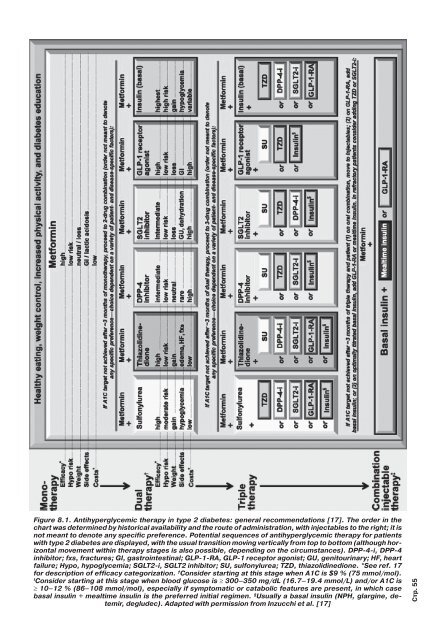Журнал "Почки" №1 (19) 2017
You also want an ePaper? Increase the reach of your titles
YUMPU automatically turns print PDFs into web optimized ePapers that Google loves.
Figure 8.1. Antihyperglycemic therapy in type 2 diabetes: general recommendations [17]. The order in the<br />
chart was determined by historical availability and the route of administration, with injectables to the right; it is<br />
not meant to denote any specific preference. Potential sequences of antihyperglycemic therapy for patients<br />
with type 2 diabetes are displayed, with the usual transition moving vertically from top to bottom (although horizontal<br />
movement within therapy stages is also possible, depending on the circumstances). DPP-4-i, DPP-4<br />
inhibitor; fxs, fractures; GI, gastrointestinal; GLP-1-RA, GLP-1 receptor agonist; GU, genitourinary; HF, heart<br />
failure; Hypo, hypoglycemia; SGLT2-i, SGLT2 inhibitor; SU, sulfonylurea; TZD, thiazolidinedione. *See ref. 17<br />
for description of efficacy categorization. † Consider starting at this stage when A1C is $9 % (75 mmol/mol).<br />
t<br />
Consider starting at this stage when blood glucose is 300–350 mg/dL (16.7–<strong>19</strong>.4 mmol/L) and/or A1C is<br />
10–12 % (86–108 mmol/mol), especially if symptomatic or catabolic features are present, in which case<br />
basal insulin + mealtime insulin is the preferred initial regimen. § Usually a basal insulin (NPH, glargine, detemir,<br />
degludec). Adapted with permission from Inzucchi et al. [17]<br />
Стр. 55















